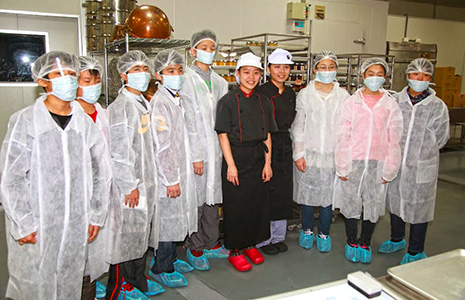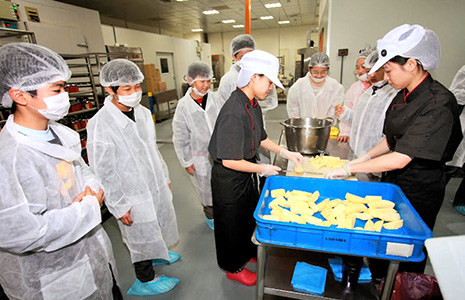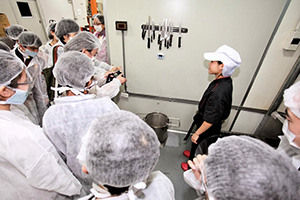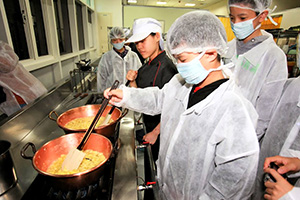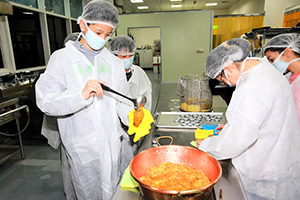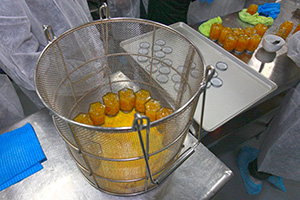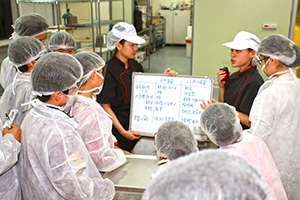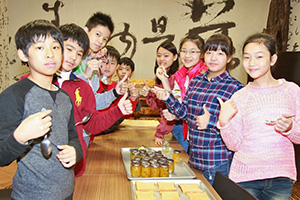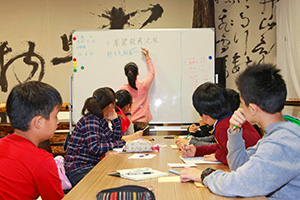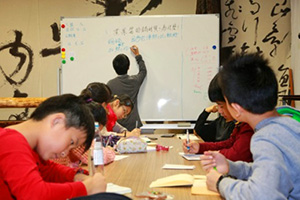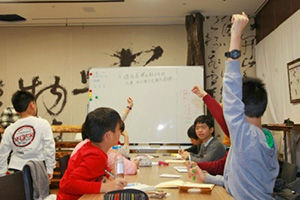 |
 |
 |
 |
 |
|||

1) Practical jam making Many people have eaten jam, but few have made jam, let alone the making of natural jam without adding any food additive. Through our visit to Red on Tree, we experienced the manufacturing of jam in person, and learned about the making process and preservation principle. It is an interesting learning experience, and we are very lucky to have such an opportunity. Red on Tree especially arranged a day with the stoppage of production, so that we could experience the making of jam. In the early morning, we arrived at the headquarters of Red on Tree, and put on the full protective clothing, hairnet and mask before entering the production area. Two jam masters in tidy working clothes led us to enter the factory, where there were a lot of equipment, including pots and pans that we often see, as well as machines that we have never seen before. They introduced the making process of jam first, which includes washing, cutting, pickling, cooking, bottling, vacuuming and cooling. They also explained the knowledge and skills to be noted during the entire operation.
We tried to make two types of pineapple jam today because it is now the season for pineapple, and it is relatively easy to make pineapple jam. First, we observed the masters’ demonstration, and then tried to recreate the recipe on our own. During the process, we realized that it is harder than we thought. We had to keep focused on every step.
Cooking was the most difficult part, because the copper pot containing pineapple must be heated continuously on the hot stove. We needed to stir the pineapple in the copper pot constantly until the ingredients were boiled and generated air bubbles. If we were not careful, we would have hurt our hands, or the ingredients would get burnt. The next key step is bottling, which requires “rapid” and “accurate” movements. The mouth of the jar should be cleaned, and then the filled jar should be turned upside down to become vacuumed for jam storage.
During the break while waiting for the bottled jam to cool down, the two jam masters also reviewed the making process and basic knowledge with us with Q&A. We answered all the questions correctly. Finally, we tasted our pineapple jam. Some loved the vanilla flavor pineapple jam, while some loved the Sichuan pepper flavored pineapple jam. The vanilla taste was sweet and mild, while the Sichuan pepper taste was strong and unique. We satisfied our appetite, and packed all the jam that we made and took it all home!
2) Jam Q&A How is the natural jam made? Is there any secret to cook delicious jam? Are there different cooking methods for different fruits? These questions are answered during our jam making process. In order to strengthen our learning, we held a jam quiz. Each member raised at least one question to form the question list, and then a contest was held. The teacher prepared biscuits as prizes. The following is the summary of our questions, and it is also a small knowledge base of natural jam!
Fruit related
Pectin related
Sugar related
A: Honey -> cane sugar -> rock candy
A: 2 kg of fruit to 1 kg of sugar. Making process related
|
|||||||||||||||||||||||||||||||||||||||||||||||||||||||||||
|
